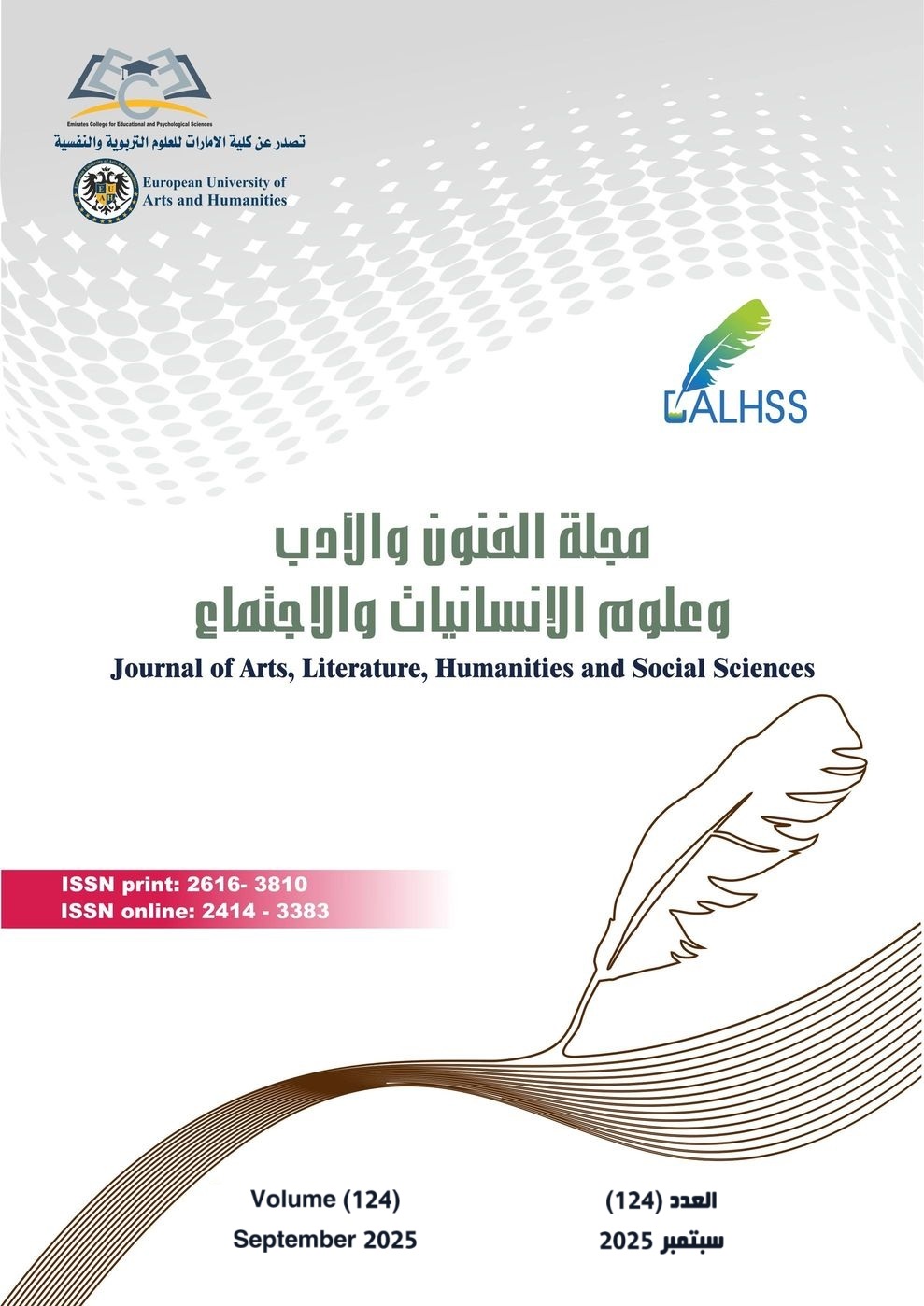البودكاست والفيديو الرقمي كمصادر تعليمية في التاريخ الإسلامي
(تحليل محتوى قنوات اليوتيوب والبودكاست المتخصص في التاريخ الإسلامي من حيث الدقة العلمية وجاذبية العرض)
الملخص
هدفت هذه الدراسة إلى استكشاف طبيعة توظيف الوسائط الرقمية الحديثة في تقديم المعرفة التاريخية الإسلامية، والكشف عن مدى تحقق الدقة العلمية في هذه المواد، إلى جانب تحديد عناصر الجاذبية البصرية والسمعية التي تسهم في تعزيز تلقي الجمهور للمحتوى، وقد اعتمدت الدراسة على منهج تحليل المضمون لأربع قنوات يوتيوب وبودكاستين متخصصين في التاريخ الإسلامي، بعينة قوامها 39 محتوى رقميًا (30 مرئيًا و9 صوتيًا)، تم تحليلها وفق مؤشرات الدقة العلمية وعناصر الجاذبية وأساليب التفاعل الرقمي، وقد توصلت النتائج إلى عدة مؤشرات مهمة، من أبرزها:
- أن المستوى العام للدقة العلمية جاء متوسطًا، حيث التزمت بعض القنوات بالمصادر الموثوقة والتوثيق الجزئي للمعلومات، بينما غابت الإشارات المرجعية الكاملة في أخرى، مما أثر على الصرامة الأكاديمية للمحتوى.
- أظهرت قنوات الفيديو اعتمادًا أكبر على وسائل الإبراز البصري والسمعي مثل الصور الثابتة والعناوين المكتوبة والمؤثرات الصوتية، في حين اعتمدت البودكاستات على الأسلوب السردي ولغة التعبير المباشر.
- من حيث جاذبية العرض، برزت القنوات التي وظفت لقطات درامية وأساليب قصصية في تحقيق معدلات مشاهدة وتفاعل أعلى مقارنة بالمحتوى الذي اقتصر على الطرح المباشر.
- أما على مستوى التفاعل الرقمي، فقد اتضح أن غالبية القنوات تدعو الجمهور للتعليق والاشتراك والمشاركة، غير أن حجم التفاعل الفعلي تفاوت، حيث تصدرت قناة "عيشها بعقل" عدد الإعجابات والتعليقات، بينما سجلت القنوات الصوتية مستويات أقل في هذا الجانب.
وتخلص الدراسة إلى أن الوسائط الرقمية تمثل رافدًا مهمًا لتبسيط وتعميم المعرفة التاريخية الإسلامية، لكنها تحتاج إلى تعزيز الدقة العلمية من خلال الالتزام بأصول التوثيق والرجوع إلى المصادر المعتبرة، مع الاستفادة من عناصر الجاذبية البصرية والسمعية لضمان وصول الرسالة التعليمية بفاعلية إلى الجمهور.
المراجع
2. الدوسري، محمد بن عبدالله. (2022). فاعلية استخدام اليوتيوب في اكتساب المهارات العملية لدى طالب الصف الأول ثانوي في مقرر الحاسب الآلي في مدينة الرياض، مجلة دراسات تربوية اجتماعية، جامعة حلوان، مج 28، ص ص: 111- 198.
3. رفعت، راندا؛ خليفة، أمل؛ وسلطان، أمل. (2024). دور المنصات التعليمية الإلكترونية في تحقيق مبدأ تكافؤ الفرص التعليمية لدى طلاب التعليم قبل الجامعي (دراسة تحليلية)، المجلة التربوية لتعليم الكبار، مج 6، ع 4، ص ص: 93- 125.
4. سليم، سمية طارق. (2024). دور اليوتيوب في تشكيل الوعي التاريخي لدى الجمهور المصري، المجلة العلمي لبحوث الإذاعة والتلفزيون، ع 30، ج2، ص ص: 117- 143.
5. سليم، سمية طارق؛ ونصر، وسام، وأحمد، سهرز (2025). المعالجة الإعلامية للأحداث التاريخية على موقع اليوتيوب، المجلة المصرية لبحوث الإعلام، ع 90.
6. السنوسي، هالة عبد القادر سعيد. (2019). أدوار المنصات الإلكترونية E-platforms والشبكات الاجتماعية Social Networks كبيئات تعلم تواصلية تشاركية في التعليم الإلكتروني في ضوء خبرة الطالبة. مجلة التربية (الأزهر): مجلة علمية محكمة للبحوث التربوية والنفسية والاجتماعية، مج 38، ع 181، ج 3، 57–89. https://doi.org/10.21608/jsrep.2019.67400.
7. شرابي، صلاح ناجح. (2021). أثر اليوتيوب العلمي على تنمية التفكير الإبداعي لدى طلبة الثامن الأساسي واتجاههم نحوه، رسالة ماجستير، جامعة النجاح الوطنية، كلية الدراسات العليا.
8. العزعزي، وديع محمد؛ ومغربي، عماد الدين حسن. (2022). دور قنوات اليوتيوب في دعم الأنشطة التعليمية للطلاب السعوديين في المرحلة الثانوية أثناء الدراسة عن بعد دراسة مسحية على عينة من مدارس مكة، مجلة الآداب، مج 22، ع 1، ص ص: 460- 490.
9. محمد، عليلي. (2015). التاريخ الإسلامي بين المفهومية والتفسير من خلال استقراء النص التّاريخي، المجلة الجزائرية للمخطوطات، مج 11، ع13.
10. النجار، نور بنت أحمد؛ واليحيائي، عبدالله خلفان فريش. (2023). معوقات توظيف شبكات التواصل الاجتماعي في التدريس من وجهة نظر معلمي الدراسات الاجتماعية في سلطنة عمان، المجلة العلمية لكلية التربية، جامعة أسيوط، مج 39، ع 6، ص ص: 75- 105.
11. Ahmad, R. W., Hasan, H., Jayaraman, R., Salah, K., & Yaqoob, I. (2023). Education 5.0: Requirements, enabling technologies, and future directions. arXiv https://doi.org/10.48550/arXiv.2307.15846 .
12. Anderson, R. (2007). Thematic content analysis (TCA): Descriptive presentation of qualitative data. Worcester Polytechnic Institute.
13. Ashidiqi, M. N. A., Rohmatiah, A., & Rahmah, F. A. (2019). YouTube Free Quran Education As a Source of Islamic Education Learning Materials and Media. Khalifa: Journal of Islamic Education, 3(2), https://doi.org/10.24036/kjie.v3i2.27 .
14. Downe‐Wamboldt, B. (1992). Content analysis: Method, applications, and issues. Health Care for Women International, 13(3), 313–321. https://doi.org/10.1080/07399339209516006 .
15. Engkizar, E., Rahman, R., & Alfurqan, A. (2018). The importance of content analysis in qualitative research. International Journal of Humanities, Arts and Social Sciences, 4(1), 28–37. https://doi.org/10.20469/ijhss.4.10004-1.
16. Guthrie, J., Petty, R., Yongvanich, K., & Ricceri, F. (2004). Using content analysis as a research method to inquire into intellectual capital reporting. Journal of Intellectual Capital, 5(2), 282–293. https://doi.org/10.1108/14691930410533704.
17. Hsieh, H. F., & Shannon, S. E. (2005). Three approaches to qualitative content analysis. Qualitative Health Research, 15(9), 1277–1288. https://doi.org/10.1177/1049732305276687 .
18. Iqbal, M., Latifah, S., & Irwandani. (2019). Channel Youtube Video Blog (Vlog) Development With Stem Approach As An Alternative Learning Media . Inovasi Pembangunan: Jurnal Kelitbangan, 7(2), 135- 148.
19. Schreier, M. (2012). Qualitative content analysis in practice. SAGE Publications.
20. Werner, W., Strauss, A., & Gralik, D. (2020). History and YouTube. Historical narrative in the age of Web 2.0. Kwartalnik NAUKA, (3), https://www.nauka-pan.pl/index.php/nauka/article/view/876.
الحقوق الفكرية (c) 2025 د. رانيا سعيد العطوي

هذا العمل مرخص حسب الرخصة Creative Commons Attribution-ShareAlike 4.0 International License.



